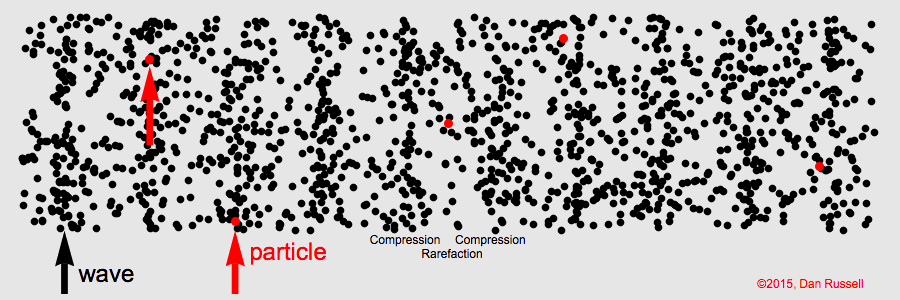What is a Wave?
Definition of a Wave
Webster's dictionary defines a wave as:
a disturbance or variation that transfers energy progressively from point to point in a medium and that may take the form of an elastic deformation or of a variation of pressure, electric or magnetic intensity, electric potential, or temperature.
The most important part of this definition is that a wave is a disturbance or variation which travels through a medium. The medium through which the wave travels may experience some local oscillations as the wave (disturbance) passes the medium, but the particles in the medium do not travel with the wave. The disturbance may take any of a number of shapes, from a finite width pulse to an infinitely long sine wave.
Examples which illustrate the definition of a wave
Have you ever "done the wave" as part of a large crowd at a football or baseball game? A group of people jumps up and sits back down, some nearby people see them and they jump up, some people further away follow suit and pretty soon you have a wave travelling around the stadium. The wave is the disturbance (people jumping up and sitting back down), and it travels around the stadium. However, none of the individual people in the stadium are carried around with the wave as it travels - they all remain at their seats.

Transverse waves on a string are another example. The string is displaced up and down as the wave pulse travels from left to right (just like the crowd wave), but the string itself does not experience any net motion. Elsewhere on my website there are other animations that illustrate what happens when transverse waves on strings reflect from hard and soft boundaries, or from more general impedance boundaries.

Sound waves in air behave in a similar way except that sound waves are longitudinal waves, meaning that the displacement of the medium is parallel to the direction the wave is traveling. As the wave pulse passes through, the particles in the air oscillate back and forth about their equilibrium positions but it is the disturbance which travels, not the individual particles in the medium. There are several other examples of wave types which can propagate through a mechanical medium.

Here is a more detailed example of a longitudinal wave traveling through a material medium. While the wave exampels above were pulses (with a finite duration), this wave is a continuous sinusoidal wave, with regions of compression (where the particles are squished closer together) alternating with regions of rarefaction (where particles are spread farther apart). Red dots (and arrows) show that individual particles simply oscillate back and forth about their equilibrium positions while the wave disturbance propagates through the medium.
For other examples of transverse and longitudinal waves, visit Longitudinal and Transverse Waves.

